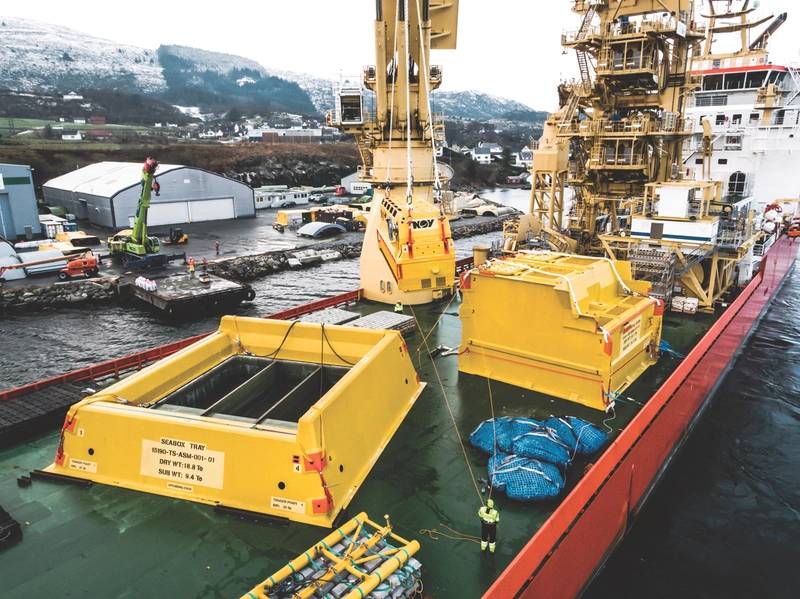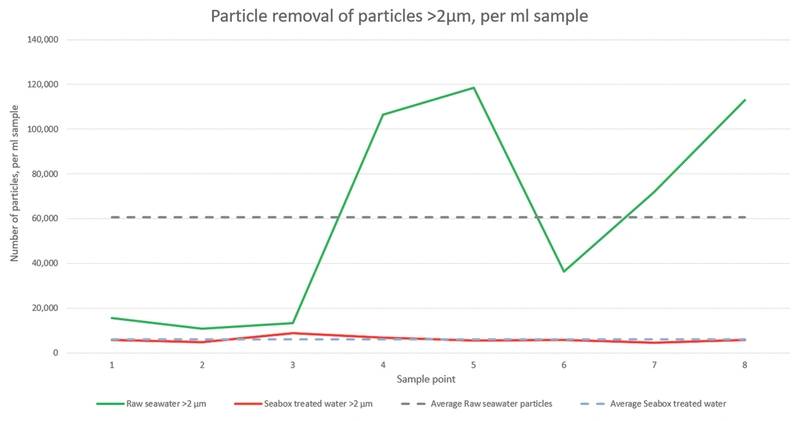
Verification of the Seabox ability to treat water for increased oil recovery
Unlocking full oil recovery potential is key for operators and a determining factor for field developments. Maximizing recovery rates is even more important in the current environment, as operators need to produce at a lower commodity breakeven price to make new marginal discoveries profitable. In the North Sea alone, there are approximately 400 potential tiebacks awaiting development. This, combined with the industry’s environmental discharge focus, necessitates new and innovative solutions.
Using secondary recovery methods to provide pressure maintenance and sweep efficiency is one way of maximizing recovery. Commonly used methods include injection of water, gas or water alternating gas. The reservoir properties determine the preferred technical solution. Not fully understanding the reservoir characteristics can lead to injectivity problems if an incompatible solution is injected into the reservoir. Injectivity can decline due to bio fouling and impairment by suspended solid in the water. Marginal developments face yet another challenge—maximizing recovery potential while achieving profitability. This is possible through a tieback to host facilities or even moving into unmanned platforms.
National Oilwell Varco (NOV) offers a new, standalone, subsea system for water treatment that can provide clean water and increase recovery potential for marginal developments as well as for aging fields, long tiebacks, greenfield developments and small wellhead platforms. The Seabox subsea water treatment system provides disinfection of raw seawater and reduces the number of suspended solids, decoupled from topside water treatment processes. This eliminates the need to push water from the host facility to the injector. Water treatment and injection can now, with this new solution, be provided where and when required. Water injection and voidage replacement becomes a realistic and affordable alternative to production by depletion only or by transporting the water from a potentially constrained host, to increase the recovery potential of marginal developments.
Seabox
The subsea water treatment module technology aims to provides high-quality water treatment subsea without compromising safety, operability or reliability. NOV has made two operational and qualified the system to technology teadiness level (TRL) 6.
The Seabox module is made of glass reinforced polymer (GRP) and consists of three major parts: a tray, a still room and a treatment unit. It is designed to have all interchangeable parts located inside the easily retrievable treatment unit to make intervention easy. The module utilizes known methods toward disinfection of the water and to settle solids. The disinfection of water is performed via two in-situ electrolysis processes. First, electrochlorination cells at the inlet of the module produce sodium hypochlorite, and then a secondary oxidizing step where higher order oxidizing agents are generated to further decompose dead organic matter. This, combined with the large volume of the module, will secure enough time for the chlorine to react with the organics in the seawater. The solid settling is provided by sedimentation (gravity), and due to the proprietary internal design of the still room module resulting in laminar flow, causing particles with a higher density than water to settle. Standardization is
key to the Seabox module design. The module is designed with a treatment capacity between 20,000 and 60,000 barrels of water per day and can be installed at water depths down to 3,000 meters.
 (Photo: NOV)
(Photo: NOV)
Test setup
NOV installed a Seabox module off the coast of Stavanger, Norway, as part of a verification project in February 2018. The objective was to verify the performance of the full-scale module in a representative subsea environment. The project was backed by three operators and had a test period of three months. During this period the module’s disinfection and particulate settlement capabilities were analyzed. The unit was installed at 220 meters water depth, 550 meters off the shore from the control station, which supplied power and communication. The subsea pump was installed near the shore and drew water through the Seabox, where a sample line downstream the pump guided a fraction of the treated water to an onshore facility for water quality analysis. A raw seawater sample line near the module offered comparison sampling
Sampling results
The scope of work, to meet the objective of the verification program, set out an extensive sampling program to verify the module’s disinfection and sedimentation capabilities. The sampling program was divided into these two major categories. Together with the project sponsors, NOV created a sampling program that involved a total of 13 different types of analyses, all performed by an independent third-party lab that specializes in services for the upstream oil and gas industry.
To verify the water disinfection capabilities of the module, e.g. the abilities of the module to remove, deactivate or kill microorganisms in the seawater, planktonic and sessile general heterotrophic bacteria (GHB) and sulphate reducing bacteria (SRB), adenosine triphosphate (ATP) and quantitative polymerase chain reaction (qPCR) was measured throughout the verification program. The general results through these samples showed that both the planktonic and sessile levels in the treated water were below detectable levels. The results are further supported by the ATP and qPCR samples. Comparing ATP levels from the raw seawater and treated seawater, on average a total 98.6% of all microorganisms were inactivated by the disinfection process within the module. The qPCR showed a total decrease in bacteria level with 99.8% and 100% for the SRB count. The results confirmed the module’s ability to provide disinfected water through the electrolysis process and use of residence time.
To verify the solid removal capabilities, NOV used Coulter Counter, turbidity and silt density index (SDI) as sampling methods. The Coulter Counter provides a measurement of the particle count and size distribution. The comparison of the raw seawater samples and the Seabox-treated water showed a significant effect on the sedimentation ability for the module. On average, the particle count for the raw seawater was about 10 times higher compared to the Seabox treated water for particles larger than 2µm. Through turbidity measurement it was possible to measure the concentration of suspended particles in the water. The turbidity of the Seabox measured around 1 FTU, which is within the range of turbidity measurements in potable water. The SDI is used as a measurement for fouling or plugging potential. During the eight samples taken, the Seabox provided SDI levels ranging between three and four, which is acceptable to potential downstream nanofiltration applications, should this be required. By comparison, five out of eight raw seawater samples had an SDI above its measurement range at SDI of 6.
 (Image: NOV)
(Image: NOV)
Future potential
This verification of the Seabox capabilities to disinfect and remove particles from the seawater, and the installation flexibility, provides a new ability to add waterflooding to marginal field developments. When located on the seabed next to a water injector, the module can provide an improved flooding regime to ensure necessary pressure support and sweep efficiency. This can increase the oil recovery rate potential as the reservoir is exploited to its full capacity. The system is believed to be a strong contender for improving waterflooding for both green- and brownfields. Not only has NOV demonstrated its performance through an extensive verification program, the Seabox module has also been in continuous operation at the Ekofisk field in the North Sea since autumn 2018 with 100% uptime to date.
This technology is a competitive solution to provide increased water treatment capacity to mature brownfields or to provide high quality water to marginal developments. It can also be used as a hybrid solution where the subsea water treatment system is used as a pretreatment step upstream existing topside water treatment facilities to face well-known challenges like biofouling. This can reduce operational expenditures and increase availability of the overall water treatment system.
The Author
Astrid Nygaard Engesland joined NOV with the legacy SEABOX AS team in 2013. She works as a marketing and communications coordinator, where she supports marketing and public relations initiatives for the Seabox subsea water treatment system.